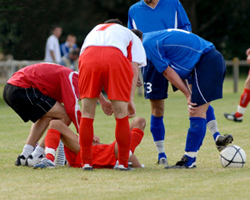How to Know If You Have a Concussion

by Linda Carroll and David Rosner
Head injuries among athletes big and small, soldiers, and many unfortunate others have created an emerging health crisis. Knowing the symptoms of this invisible injury is key. From The Concussion Crisis: Anatomy of a Silent Epidemic by Linda Carroll and David Rosner.
All head injuries should be taken seriously. A concussion may be an invisible injury, but its symptoms and signs can often be spotted by parents, friends, coaches, athletic trainers, and others who know the head-injured individual. The following symptoms or signs of concussion may occur after a bump, blow, or jolt to the head:
Observed Symptoms
• Appears dazed or stunned
• Vomiting or complaining of nausea
• Confusion
• Memory problems (difficulty learning new information)
• Amnesia (loss of memories from before and/or after the injury)
• Any loss of consciousness
• Difficulty with coordination or balance
• Behavior or personality changes
• Slowed thinking, reaction, speaking, or reading
• Slurred or nonsensical speech
• Seizures
Reported Symptoms
• Feeling dizzy, dazed, or lightheaded
• Headache, neck pain, or a sensation of pressure in the head
• Increased sensitivity to light or sounds
• Feeling hazy, foggy, or groggy
• Feeling sluggish, fatigued, or unusually tired
• “Seeing stars”
• Blurred vision or double vision
• Ringing in ears
• Mood changes (e.g., sadness, listlessness, irritability, anxiety, loss of motivation)
• Difficulty concentrating, thinking, or making decisions
• Sleeping longer than usual or having trouble sleeping
• Loss of sense of taste or smell
Sources: Adapted from the Centers for Disease Control and Prevention’s “Heads Up Toolkit for Youth Sports,” the “Sport Concussion Assessment Tool 2″ developed and adopted in 2008 by the Third International Conference on Concussion in Sport, and concussion education articles published online by the University of Pittsburgh Medical Center and the University of California–Los Angeles Health System.




